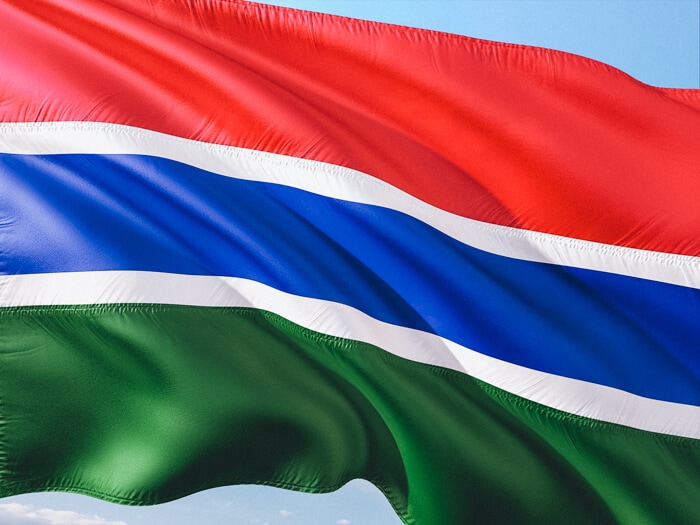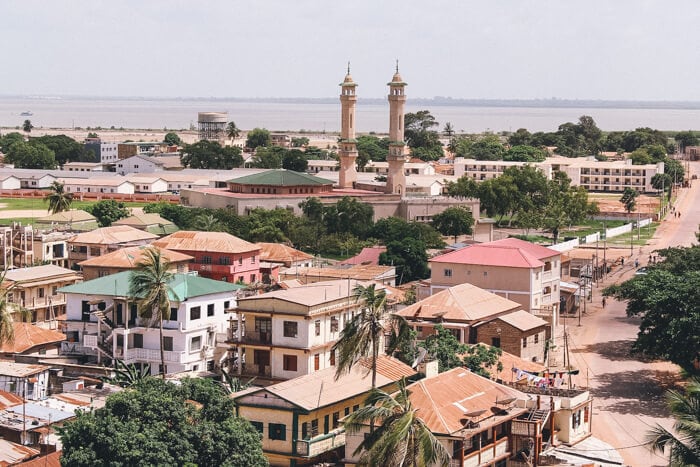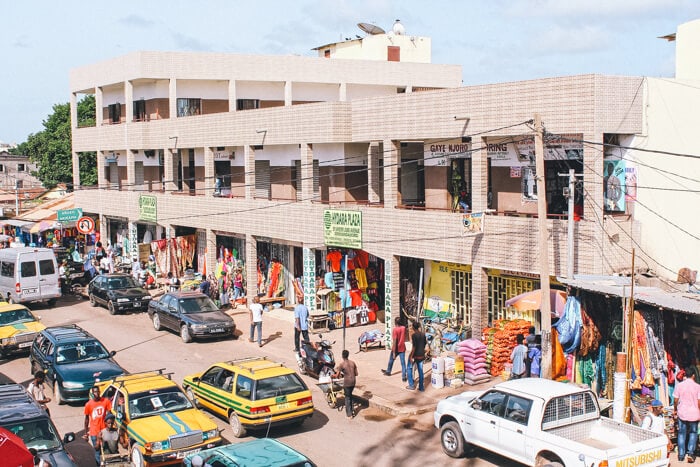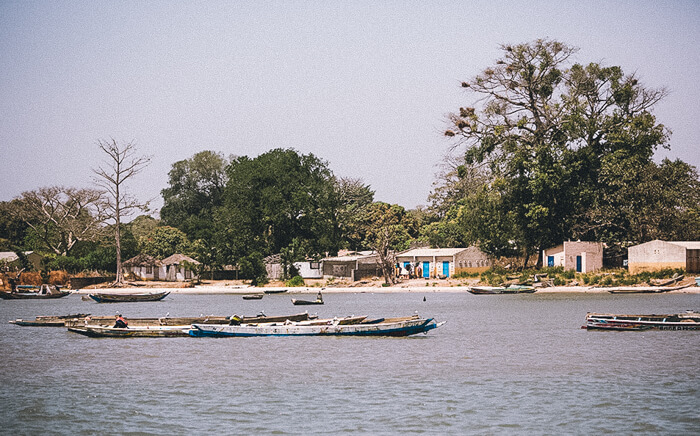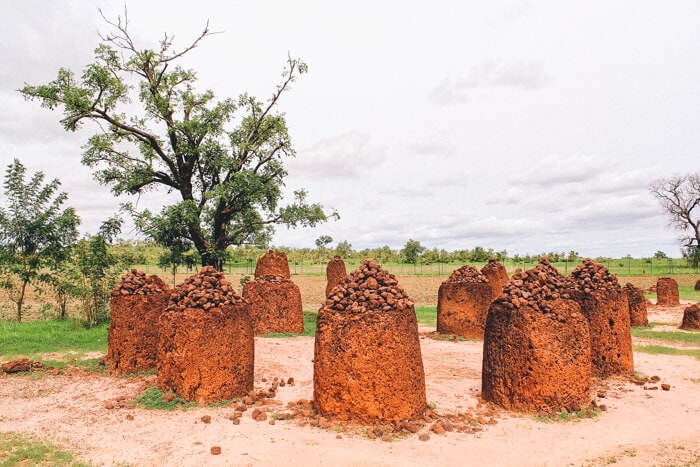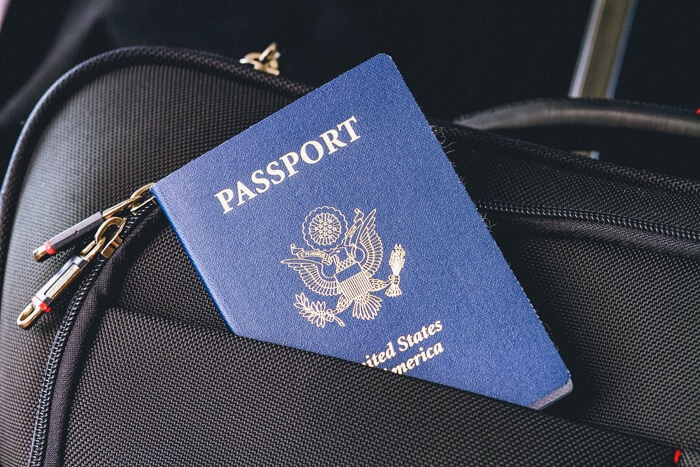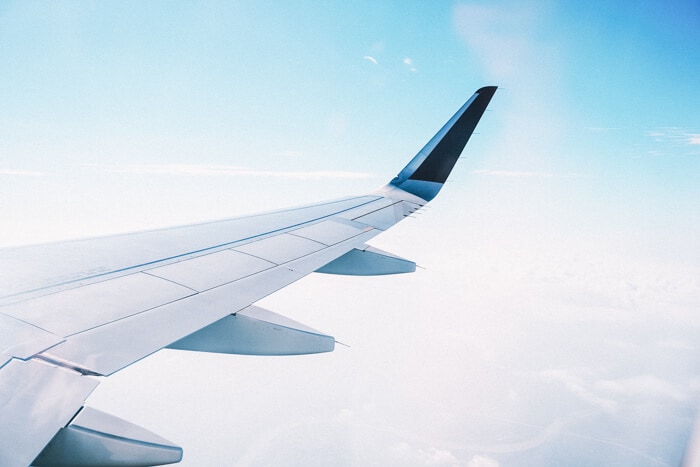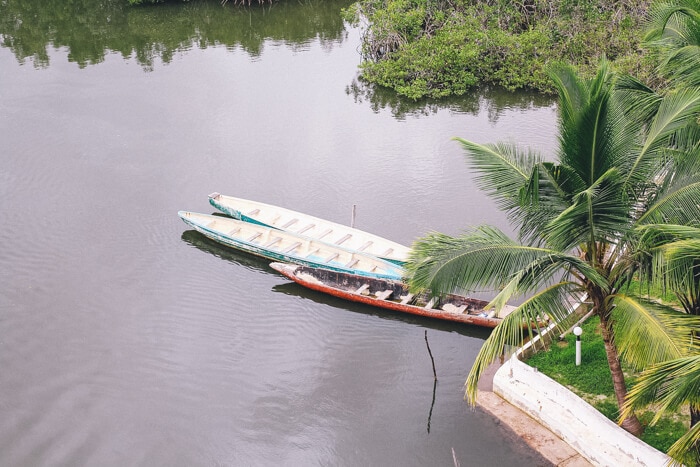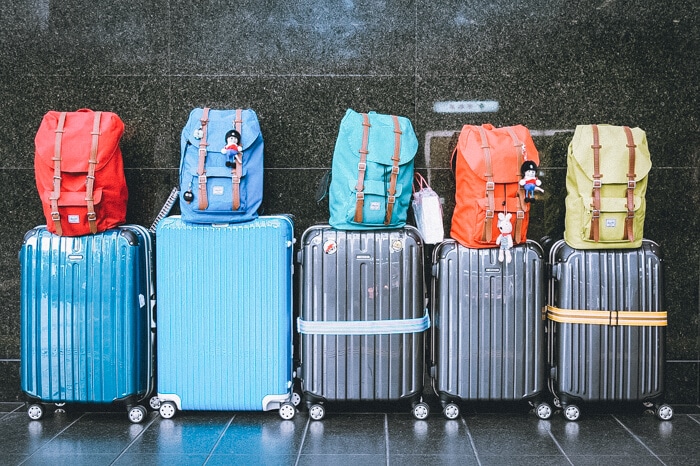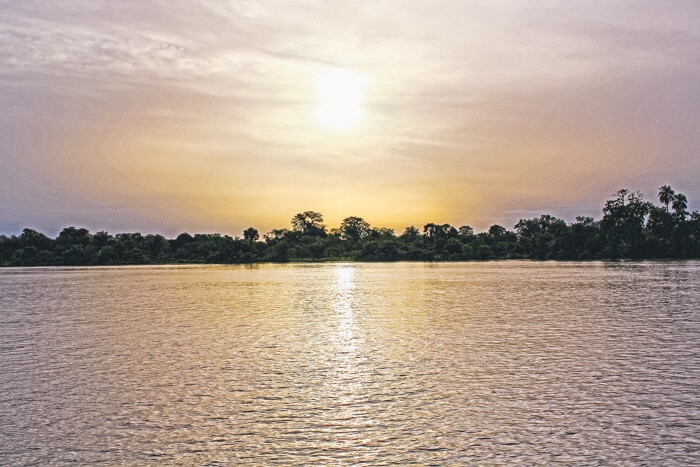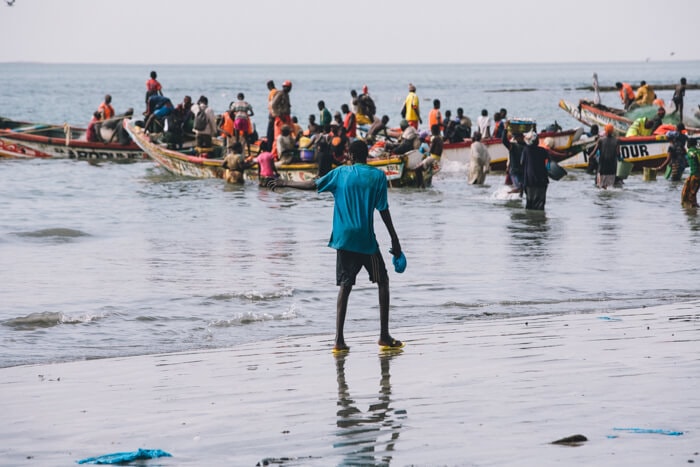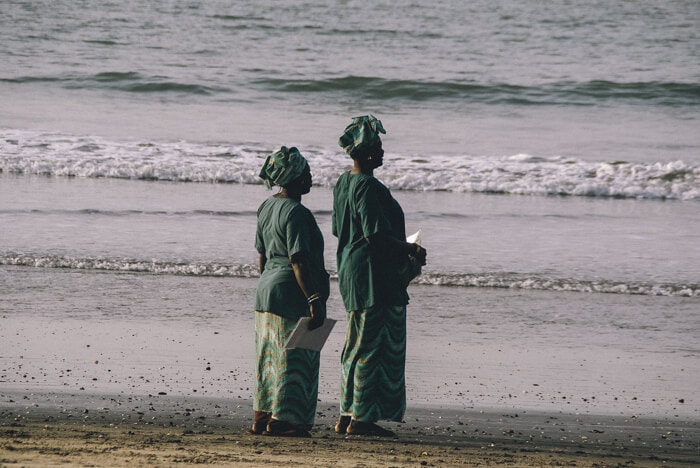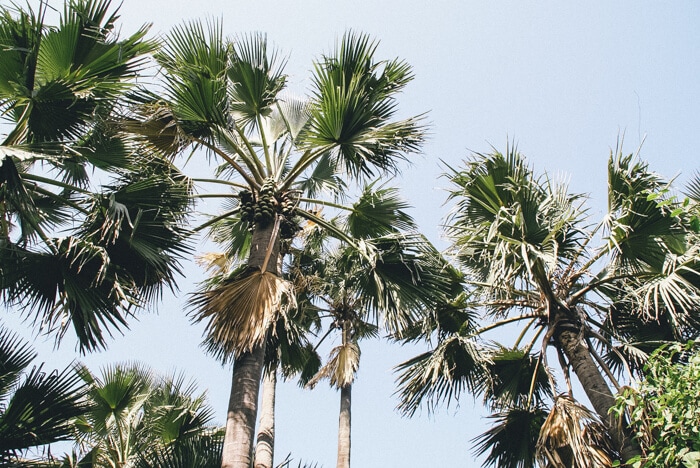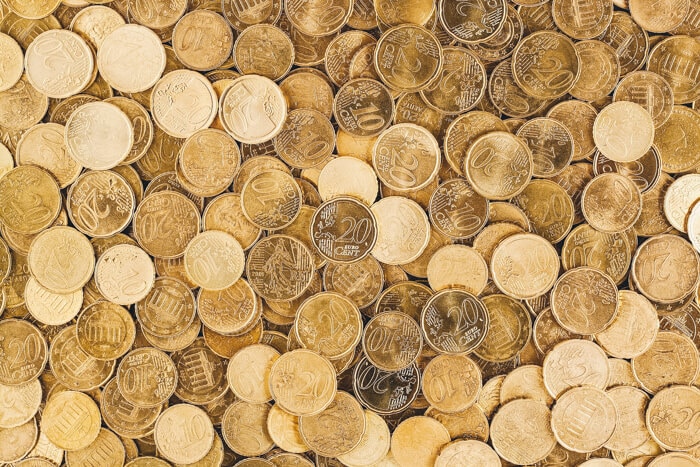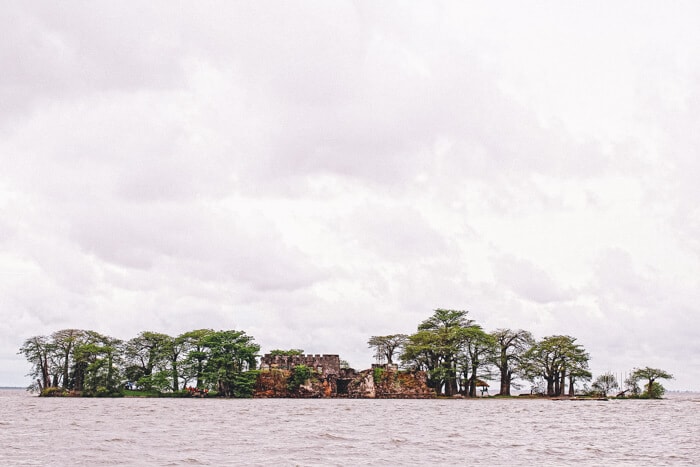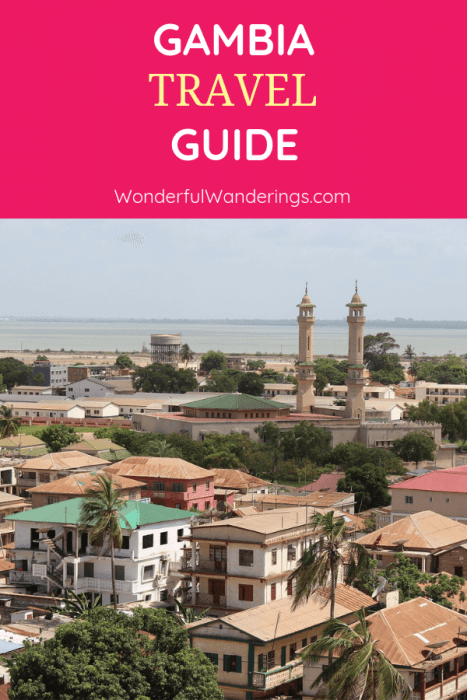Planning your Gambia holiday? Great! This Gambia travel guide will help you do that.
The Gambia is the smallest country on mainland Africa and is completely bordered by Senegal, except for it coastline, which faces out to the Atlantic Ocean. Located in West-Africa, it gained independence from the British in 1965 and has five official languages and dozens of different ethnic groups.
While The Gambia might not be the first place that comes to mind when you think of travel destinations, this tiny West African nation really packs a punch. Along with perfect golden, uncrowded beaches and vibrant markets, you’ll find some of the happiest and most laid-back people on the continent. So why not plan a holiday to the Gambia and check it out for yourself?
Contents
- Gambia holiday planning: quick facts
- The Gambia’s Administrative Regions
- How to travel to The Gambia
- How to travel around The Gambia
- What to pack for The Gambia
- The best time to visit Gambia
- What to eat in The Gambia
- Famous events in The Gambia
- Public holidays in The Gambia
- Cultural customs to be aware of in The Gambia
- Where to stay in Gambia
- Don’t forget travel insurance
- Is Gambia safe?
- The use of cash and cards in The Gambia
- Tipping in The Gambia
- A brief history of The Gambia
Gambia holiday planning: quick facts
Size: 10,689 km² or 4,007 sq mi
Where is Gambia?: On the west coast of Africa, bordering Senegal.
People living there: more than 1,880,000
Capital: Banjul
Governmental structure: unitary presidential republic
National day: February 18
Time: UTC
Gambia currency: Gambian dalasi
Power voltage and socket type(s): 230V, plug type G. If these don’t match with your devices, make sure to bring a universal adapter.
Official religion(s)/Freedom of religion: Freedom of religion. 95% of the population is Muslim while Christians make up 4%.
Official language(s) and general knowledge of English: English is the official language and Wolof, Fula, and Jola also spoken.
Drives on this side: right
International driver’s licence accepted? yes, for those aged 23 and over
Phone code: +220
Vaccinations needed? Hepatitis A, Tetanus, Yellow Fever, Hepatitis B, Meningococcal Meningitis, Rabies, Typhoid.
Can you drink the tap water? no
The Gambia’s Administrative Regions
1. Banjul
Banjul is technically a city rather than an administrative region, but it is home to the capital, so The Gambians include it in the list. When on holiday to Gambia, visit Banjul, but try and avoid to the temptation to head directly to the beach and seek out some of its historical attractions. The Arch 22, built to celebrate the coup of July 22 1994, is particularly impressive.
Whilst in the capital, be sure to visit the Albert Market, which offers a broad selection of fresh produce, souvenirs, jewelry, food and more, it’s a great way to get a taste of local culture. You can even do a Gambian cooking class if you really want to be immersed in Gambian culture. Then you can go to the beach. There’s no shortage of things to do in the Gambia!
2. Brikama
Brikama is the most southwestern region in The Gambia. It is home to the largest portion of Gambians and is lucky enough to boast a chunk of the country’s small and highly coveted coastline. Most Gambians and visitors would agree that a major highlight of this region is the Brikama Craft Market. It sells a range of handmade products and is ideal for practicing your haggling! Check it out during your trip to Gambia.
The Makasutu Cultural Forest is another obvious highlight of this region. Here, you will find a range of landscapes, including salt flats, mangroves, and forests. There are lodges available if you fancy spending the night.
3. Kanifing
Kanifing is the smallest of the regions (not including the city of Banjul), measuring just 75.6 square kilometers. The region is located at the westernmost tip of the country, right next to Banjul on the coast.
Kotu Beach and the Bijilo Forest Park are popular with visitors who want to soak up the sunshine outside. If you are after wildlife, there is a monkey park open to visitors as well as a crocodile pool.
4. Mansa Konko
Mansa Konko is one of the larger regions, yet it houses a very small chunk of the population. It sits along the southern side of the River Gambia and boasts some beautiful nature worth checking out on your Gambia vacations.
The Kiang West National Park should be your first port of call if natural beauty is what you are after. This park is the largest and most important in The Gambia. The park is home to a huge number of different species, including crocodiles, mongooses, hyenas, otters, warthogs and a myriad of colorful birds.
5. Kerewan
Kerewan stretches from the coast right into the center of The Gambia. It runs along the northern border of the Gambia River, directly above Mansa Konko on the map. Along the coastline of this region is the Niumi National Park. Here you might be able to spot whales, dolphins, manatees and a number of land-based animals too.
Deeper into the heart of The Gambia is the Bao Bolong Wetland Reserve, which lines the river bank and stretches almost to the Senegalese border. The landscape here comprises mangroves, salt marshes, and savannah.
Lastly, this is the region where you can go on a Roots tour to learn about the true story of Alex Haley, a descendant of slaves who went back to The Gambia to find our where his ancestors lived.
6. Kuntaur
Kuntaur used to be part of what was called the “Central River Division” and is the most central region in the country. It is also one of the quietest, but what it lacks in entertainment it makes up for with tranquility. One of the most peaceful places in Gambia, this is where you travel if you want to relax.
However, this region is not completely without activities. From here you can embark on a river cruise to seek out hippos, baboons, and crocodiles.
7. Janjanbureh
Janjanbureh is home to one of the most fascinating tourist attractions in Gambia: the Wassu Stone Circles. This designated World Heritage site comprises 11 enormous megaliths placed in a circle. They date back to between 927-1305 AD and are The Gambia’s equivalent of England’s Stonehenge.
Once you’ve marvelled at Wassu, you can head to Janjanbureh Island to do some wildlife spotting and birdwatching. Or you can head into town and seek out some of the crumbling remains of the colonial buildings that once stood so proudly in these parts.
8. Basse
The easternmost and second largest region of The Gambia, Basse is where you should head if you want a truly authentic taste of family-runy. It is not at all geared towards tourists but locals are usually happy to take visitors under their wing and show them around.
Enjoy traditional food in one of the family run eateries and check out the vibrant craft markets in the town. Outside of the main town, lush landscapes run from your feet out to the horizon.
How to travel to The Gambia
Entry requirements
EU citizens do not need a visa to enter The Gambia. When planning vacations to Gambia, US citizens will need to obtain a Gambia visa at the Gambian embassy.
Transportation
By bus
There are buses and sept-places (seven-seater) taxis from Dakar, Senegal to Barra, The Gambia. From there, you will need to take a ferry to reach Banjul. This is the best option if you plan on arriving in The Gambia overland.
By ferry
You can also privately hire a boat to take you from Dakar into Banjul but this can be very expensive and time-consuming.
Fly to Gambia
Most international flights to Gambia will arrive at the Banjul International Airport, located in the capital. Many midrange and luxury hotels will offer a transfer service from the airport.
If your hotel doesn’t offer this service, you can always prebook a taxi. That way you don’t need to worry about finding a legitimate one upon arrival, nor about the payment as you’ll process that upfront. Click here to book your airport transfer.
Still need to book your flight? Check here for the best flight options and prices.
How to travel around The Gambia
Independent travel around The Gambia
Independent travel around The Gambia is possible but challenging. The country is yet to develop much of a tourist infrastructure, which can make traveling between regions and finding accommodation difficult. Group travel is a much easier and safer option.
If, however, you are planning on traveling independently, you can move around with the use of shared taxis or by hiring your own vehicle. The river Gambia is also fully navigable by boat, which can double up as a wildlife spotting trip.
If you’re thinking of getting a rental car in The Gambia, Rentalcars.com is a good site to check. It compares hundreds of rental car companies to make sure you get the best deal based on your search criteria.
What to pack for The Gambia
The temperature in The Gambia stays around 30 degrees Celsius pretty much all year round. This means you should be packing light and breathable clothing whenever you decide to go. You should note, however, that The Gambia is a high-risk zone for malaria, so long sleeves, and long trousers are highly recommended in the evenings.
Essentials:
- light cotton clothing
- sunglasses
- suncream
- comfortable walking sandals
- a Steripen to filter tap water with
- a reusable water bottle
- a universal adapter
- mosquito repellent lotion or spray
The best time to visit Gambia
The temperature in The Gambia is pretty consistent all year round, so the only thing you need to worry about is the rain. The rainy season in The Gambia runs from June to October so maybe you want to avoid holidays to the Gambia during this season. During this period the temperature is marginally cooler and the landscapes are lusher.
The dry season is from November to May and this part of the year is considered the high season as the climate is more pleasant. Yes, The Gambia is a great place to catch some winter sun! Generally, the dry season is considered the best time to visit The Gambia.
What to eat in The Gambia
The Gambia is hardly a recognized culinary capital, but that doesn’t mean it hasn’t got plenty of delicious dishes to offer. While you’re there you’re definitely going to want to try:
- Benachin – fish or meat with tomato, herbs, aubergine, and other vegetables, served with couscous
- Yassa – spicy chicken or fish with lemon, onion, garlic, chili, and other ingredients, served with rice
- Afra – chopped up meat with mustard or spicy sauce
- Baobab juice – made from the giant baobab trees
- Mbahal – salted fish cooked in a pot with peanuts, beans, chilis, and rice
- Domoda – peanut-based dish with vegetables and rice
- Tapalapa – looks just like a baguette and is often served at breakfast
- Palm wine – cloudy and mildly alcoholic drink that gets stronger the longer you leave it
- Akara – deep-fried balls of flour and black-eyed peas
- Okra stew – meat or fish stewed with okra and onions
Famous events in The Gambia
- Banjul Cultural Festival – a display of local Banjul cultural with parades, art, music, and dance performances (25th December – 1st January)
- Banjul Fine Arts Festival – a celebration of Gambian cultural with a particular focus on its vibrant arts scene (the first two weeks of January)
- Independence Day – the most exciting festival of the year, this day commemorates The Gambia liberating itself from British rule (February 18th)
- Sanyang International Cultural Festival – a showcase of Kombo culture and dramatic performances of the circle of life (last weekend in January)
- Bureng (Koosee) Cultural Festival – aimed at preserving the traditional practices of the Mandinka people, this festival takes place after the harvests (mid-March)
- International Roots Festival – a biennial festival that involves a visit to historical slavery sites and heritage sites and includes cultural performances and ceremonies (second week of May)
- July 22nd Celebrations – in commemoration of the coup of July 22nd, 1994, parades and festivities take place around the Arch 22 in Banjul (July 22nd)
- Tabaski – also known as Eid Al Adha, this Islamic festival remembers the sacrifice Abraham was prepared to make of his son Ismail (August)
- Open Mic Festival – gives young Gambian musicians the chance to show off their talents (last weekend in December)
Public holidays in The Gambia
- New Year’s Day
- Independence Day (February 18)
- Good Friday
- Easter Monday
- Labour Day
- Revolution Day (22 July)
- Assumption
- Christmas Day
Cultural customs to be aware of in The Gambia
Gambians are generally very friendly and welcoming and may well greet you with a handshake or a touch of the arm. In accordance with this friendly attitude, Gambians will rarely ask you for something directly, but will instead talk around what they want until you work it out.
Everyone runs on their own time so don’t be surprised if public transports runs late or your tours don’t start on time. It will happen eventually.
Women should dress conservatively whilst in The Gambia and take particular care to cover their thighs as these are seen as provocative body parts. Both men and women should be respectful of elder Gambians and to never put their thumbs up as this is seen as an obscene gesture.
Where to stay in Gambia
Booking.com is the site I always use to book hotels, guest houses and bed and breakfasts. It has a whoel range of filtering options so I can easily get a list of only the hotels that meet my criteria. If want to book your hotel for The Gambia, I highly recommend you check there.
When I want to stay at an apartment, I use Airbnb.
Don’t forget travel insurance
Plan for the best, prepare for the worst. Travel insurance has you covered in case (part of) your trip gets canceled, you get sick or hurt abroad, and sometimes even when your electronics break or get stolen. I always make sure I’m covered every trip I go on.
Don’t have travel insurance yet? Check out SafetyWing. They offer super flexible plans that you can even sign up for while you’re already on your trip. On top of that, they were the first travel insurance to cover COVID, and when I got COVID, they reimbursed all of my expenses without making a fuss. Their customer support team is great and I can personally recommend them.
Is Gambia safe?
So, is it safe to travel to Gambia? Well, Due to the level of political unrest in The Gambia recently, there have been a number of adverse travel warnings. However, it is perfectly possible to visit The Gambia without encountering any trouble if you are sensible in your approach. Be sure to check up to date advice from your country’s government before traveling.
The most important thing is not to flash your wealth. Expensive cameras, watches, and jewelry should be left at home and you should carry a minimal amount of cash with you. You should also be careful walking around at night – where possible, take a registered taxi.
Finally, avoid any political demonstrations as these can turn violent and protesters can be crushed or injured.
The use of cash and cards in The Gambia
The Gambia still operates a cash-based economy although there are an increasing number of establishments that will accept credit cards. The best option is to withdraw cash at ATMs in small amounts to avoid drawing attention to yourself.
Tipping in The Gambia
In The Gambia, travelers are often seen as wealthy and are expected to tip. The exception may be, for example, a backpacker staying at a hostel or someone eating in a very basic cafe. As in many countries, there are some unwritten rules about who to tip what in The Gambia, which you can read more about here.
A brief history of The Gambia
A sophisticated culture first became apparent in The Gambia in 500 AD. After around 900 years under the rule of the Mali Empire and then the control of the Mandinka people, the Portuguese set up here. They used The Gambia to send slaves and gold to Portugal.
After various attempts by the French, Dutch and English to take control of The Gambia, the country eventually became part of the British Empire in 1765. This established the Province of Senegambia (what is now Senegal and The Gambia). The Gambia remained under British control until it declared independence in 1965.
In the decade after independence, The Gambia flourished and tourists flocked to the country. This boom collapsed during the 1980s as the price of the groundnut (one of The Gambia’s main crops) plummeted. Today, The Gambia is progressing at a steady pace and it officially joined the Commonwealth on February 8th 2018.
PIN FOR LATER

